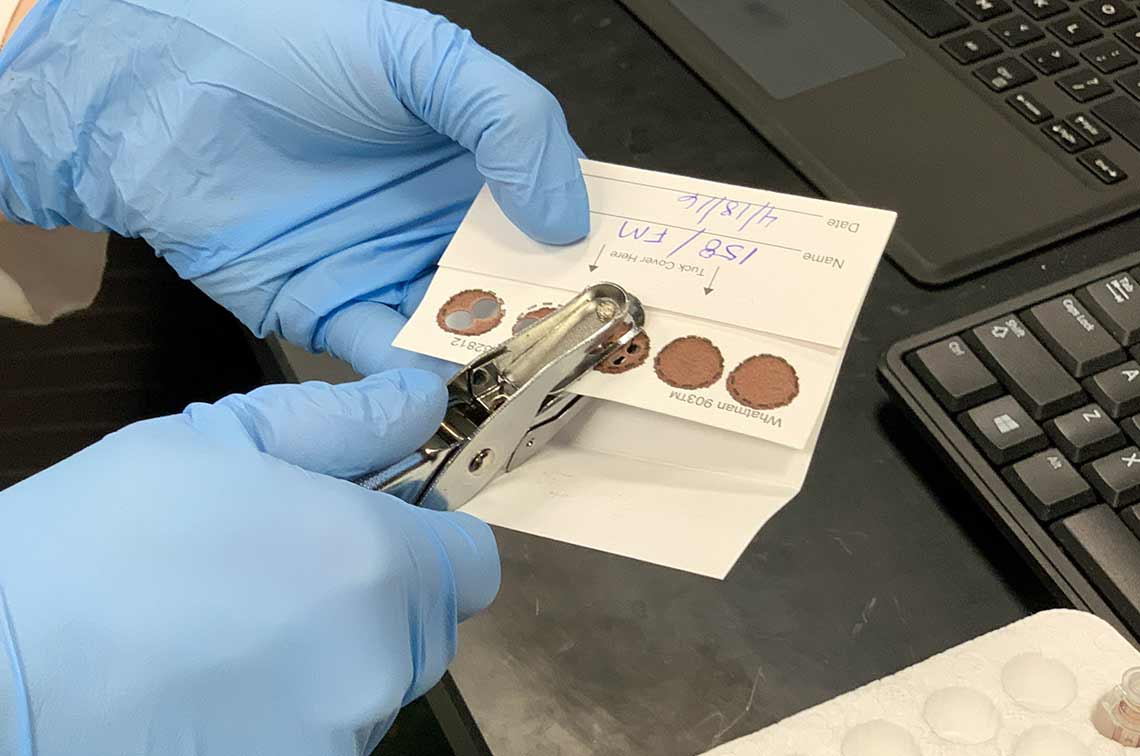
Learn how Ohio State researchers discovered a new way to detect fibromyalgia.
"We're giving patients a unique experience that allows more direct communication with providers and access to health information," said L. Arick Forrest, MD, president of Ohio State University Physicians, Inc., and vice dean of Clinical Affairs for The Ohio State University College of Medicine.
Among the tools at patients' fingertips are a tablet-based, in-hospital app called MyChart Bedside and the new, custom-built mobile app Ohio State MyHealth, which connects to the online patient portal MyChart.
"People are using technology to improve convenience in other areas of their lives, such as shopping, finding jobs and making restaurant reservations," Forrest said. "We want health care to be just as convenient and accessible."
MyChart is an online portal that helps patients access schedules and test results, pay bills, track their health over time and communicate with their health care providers at any time, day or night.
In 2013, the Ohio State Wexner Medical Center became the first academic medical center in the U.S. to provide patients and their families access to MyChart Bedside while in the hospital. The app's features, available on a hospital-provided tablet, include daily schedules, meal ordering, internet access and self-paced education and videos about medical conditions.
"MyChart Bedside allows patients and families to engage with the patient care team and with the activities that occur around their hospitalization, allowing patients to be more involved in their care and access information when they need it," said Milisa Rizer, MD, chief clinical information officer at the Ohio State Wexner Medical Center.
"Our partnerships with technology leaders allow us to be leaders in the field of patient engagement, which we believe is critical to our patients' health."
The free mobile app Ohio State MyHealth, which launched last year, is available for both iOS and Android users. Ohio State MyHealth combines MyChart's secure functions with additional, unique tools that patients and families identified as most important for managing health and accessing services.
Patients can get turn-by-turn directions and parking garage availability, order prescription refills, schedule appointments and find new health care providers with a few taps. Video appointments and online scheduling are already available for some services and physicians, with more becoming available each day through Ohio State MyHealth.
"This is a new way of providing medical care," Forrest said. "Especially at an academic medical center like Ohio State, where many patients live two or three hours from their doctors, this method can increase check-ins with the patient, improve their outcomes and save time and money – both for the patient and the health system."
Ohio State is leading research to better tailor technology to patient needs and to quantify how technology improves health outcomes. Click to tweet this story
Ohio State also is leading research to better tailor technology to patient needs and to quantify how technology improves health outcomes.
Susan Moffatt-Bruce, MD, PhD, executive director of Ohio State's University Hospital, has secured a four-year, $4 million grant to establish a "learning health care system" and patient-safety learning lab in a unique research institute.
"One research project aims to optimize clinical alarms for patients – who gets monitored, when and for how long – and another focuses on digitally anticipating infections within the hospital before they occur," Moffatt-Bruce said. "Another leverages MyChart Bedside to improve outcomes."
Findings from additional health services research studies at Ohio State already have led to changes to improve the tablet app, said Ann McAlearney, ScD, who directs the institute with Moffatt-Bruce and co-director Tim Huerta, PhD.
"The results of our studies are immediately applied to practice settings in ways that improve management practices, patient experience, patient safety and communication with patients and providers," McAlearney said. "And the research we're doing here at Ohio State has the potential to be translated into practice in health care organizations everywhere, improving health and health care."
In the United States, there are just 11 similar grants supporting this important type of research.
"We're providing a unique experience for our patients," Forrest said. "And we're setting the pace for what patient care of the future should look like."
Learn more about MyChart and the Ohio State MyHealth app
Watch how Ohio State is developing innovative solutions to improve health.